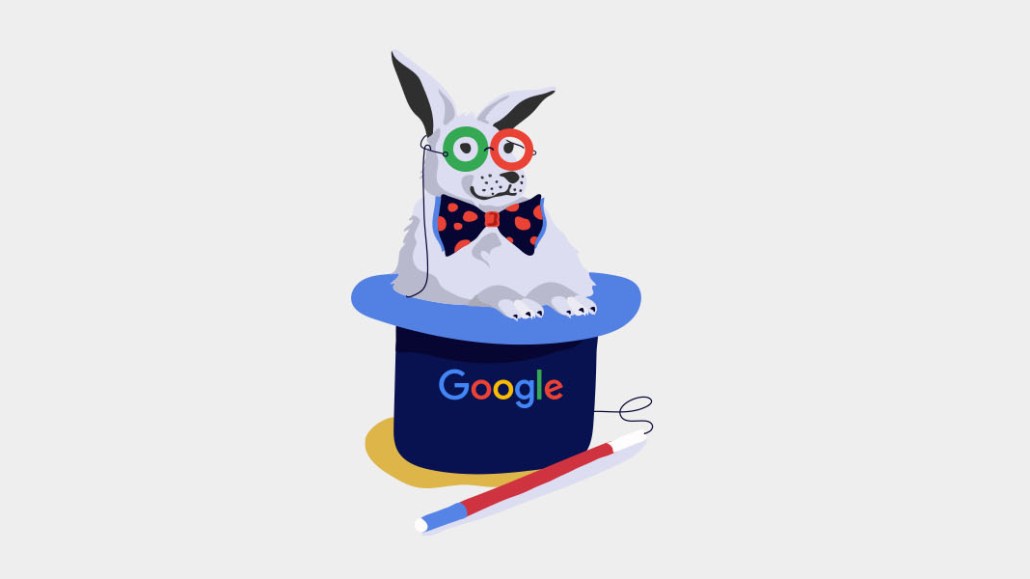Other platforms ‘offer a superior experience’: Why Google’s Shoploop missed the social shopping trend

In July 2020, Google announced it was getting into the social shopping game. The so-called Shoploop app was meant to be a cross between the short videos of TikTok, with the purchase ease of Amazon Live.
Six months later, it seems that Shoploop still hasn’t hit its stride, according to six industry insiders who spoke to Digiday. While its videos remain available inside Google Shopping, a combination of subpar features, an imbalance of content and lack of sales kept Shoploop from gaining any traction, sources said. Google has not given further updates to companies that otherwise regularly communicate with the company, according to sources who were originally told about the product’s launch.
“From a product development perspective, I don’t think it’s anywhere near in-market completion,” said Gabe Feldman, business development lead of influencer marketing at Viral Nation.
Google has had a tough time creating a third-party marketplace, even when it made that marketplace free. As platforms vie to create an easy social shopping experience, Shoploop has served as a cautionary tale that shoppable content for the sake of shoppable content is not necessarily what consumers want. While platforms including Instagram and TikTok are capitalizing on the pandemic-fueled e-commerce boom, Shoploop has shown that social commerce has to be balanced with other content, a lesson Amazon learned from its doomed Instagram knock-off, Spark.
“Shoploop’s proposition had the ‘shopping’ part in its core and left the ‘social’ element as secondary,” said Maddie Raedts, founder and cco of Influencer Marketing Agency.
Shoploop was a brainchild of Area 120, Google’s in-house product incubator. The would-be app started by inviting influencers on Instagram to make 90-second, mini-unboxing videos about air fryers or applying a new eyeliner, with the product link prominently displayed. Influencers would get a commission from the affiliate link. Google declined to share figures around generated revenue, users, or the number of influencers on the platform.
Raedts said that the main reason influencer marketing works is because creators have developed a close relationship with their followers and built a community.
“If I’m an influencer and my core audience lives on Instagram or TikTok, why would I want to move them to another platform?” added Feldman. “Shoploop would need to give influencers an experience they don’t already have.”
Shoploop was missing several features that brands and influencers have come to expect, like a “follow” button, or a place for creators to link to their blog, other social media, or contact information. The heavy commercial focus takes away from giving creators the tools they need to build a relationship with an audience. It’s also not possible to save videos for later, or search for certain influencers. Shoploop’s content is geared toward a high-intent-to-buy audience, which doesn’t do as well as the “snackable” content of TikTok, and is less “inspiring” compared to Pinterest searches, said Feldman.
“There are other platforms that arguably offer a superior experience,” said Gil Eyal, founder of HYPR, an influencer marketing database.
Shoploop is not Google’s only pass at video that’s short-form or shoppable.
A Google spokesperson sent a statement saying the company is continuing to “explore other ways to connect creators, consumers, and brands across Google properties, including a new integrated shopping experience on YouTube that is in beta testing stages.” YouTube’s chief product officer, Neal Mohan, teased that capability in a blog post published Feb. 17. That same blog post announced that a mobile-first short video product, YouTube Shorts, now drawing 3.5 billion views per day, is coming to the U.S. from India in beta.
For now, Shoploop has been rolled into Google Shopping on mobile browsers. But some influencers still think that Shoploop’s core offering of product videos has a future.
Caroline Mathis is known to her 15.1k Instagram and her 13.5k TikTok followers as life_with_cam. She said Google tapped her via Instagram in October of last year to be part of Shoploop.
“I think Shoploop will work better than IG and Tik Tok once it gets more well known,” Mathis said via email. “First, video content and reviews are the wave of the future. They explain the product much better than a photo and they help people to understand the product more. Second, the link to the product is right in the video so it makes it so much easier to shop.”
Mathis said she has yet to earn a commission from a Shoploop sale since the platform is still in “early stages.”
This story has been updated to include a statement from Google.
More in Media

How creators are using generative AI in podcasts, videos and newsletters — and what advertisers think about it
Here’s a look at how some creators are leveraging generative AI to create video, audio and written content — and whether or not that’s a turn-off for advertisers.

Buzzfeed, News Corp and New York Times push back on tariff fears in earnings calls
Publishing execs pushed back on tariff and macroeconomic climate fears in Q1 2025 earnings calls, expressing confidence that their businesses would grow this year.

Digiday+ Research: Publishers’ subscription revenue is up this year, and they’ll focus on growing it even further
Subscriptions is one area where publishers are seeing more revenue, and, in turn, ramping up their plans to strengthen that part of their business in the coming months.








